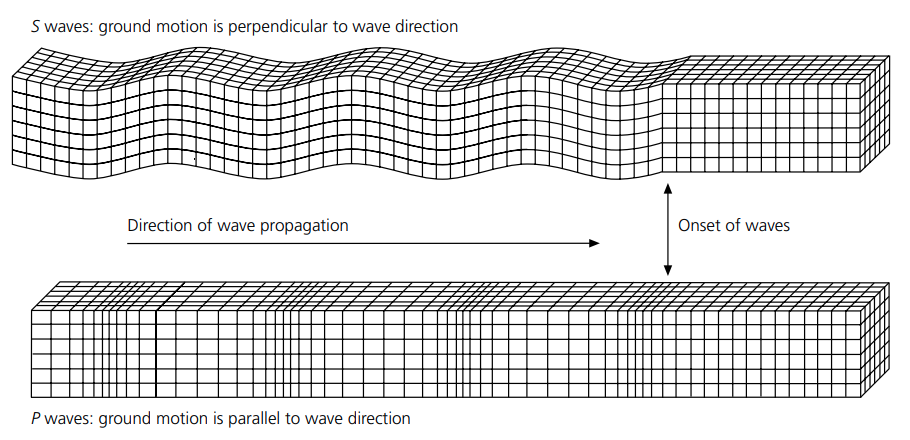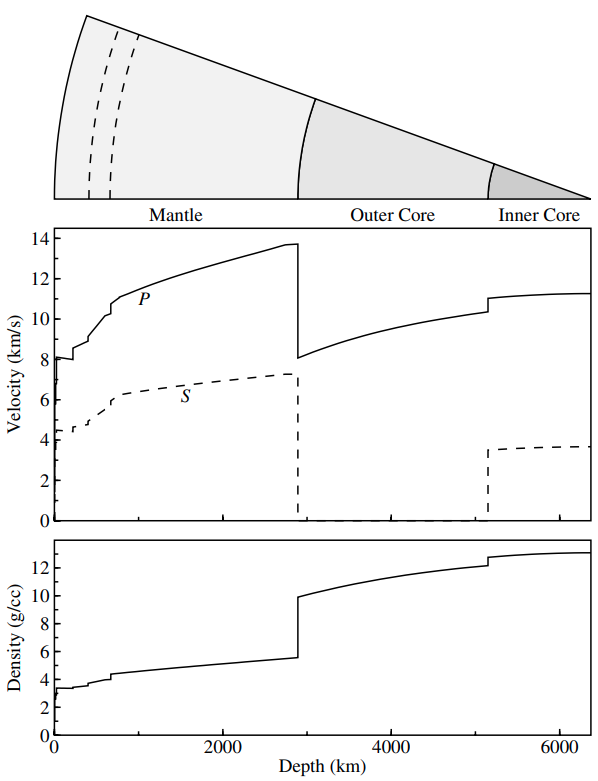Introduction¶
Seismic waves are waves of energy that travel through Earth’s interior, and are a result of seismic sources, e.g., earthquakes, volcanic eruptions, landslides and man-made explosions.
There are two kinds of seismic waves, i.e., body wave and surface wave. Body wave is a seismic wave that moves through the interior of the earth, as opposed to surface waves that travel near the Earth’s surface.

Left: Long-period vertical component seismogram. Right: Ray paths for the seismic phases labeled on the seismogram. (Fig. 1.1-3 in An Introduction to Seismology Earthquakes and Earth Structure)¶
There are two kinds of body waves, i.e., P wave and S wave. P wave produces displacement in the direction of wave propagation and a volume change. S wave produces displacement perpendicular to the direction of wave propagation and distort the material without any volume change.

Displacements produced by plane compressional (P) and shear (S) waves, shown by a “snapshot” in time. (Fig. 2.4-3 in An Introduction to Seismology Earthquakes and Earth Structure)¶

Earth’s P velocity, S velocity, and density as a function of depth from the Preliminary Reference Earth Model. (Fig. 1.1 in Introduction to Seismology (2009))¶